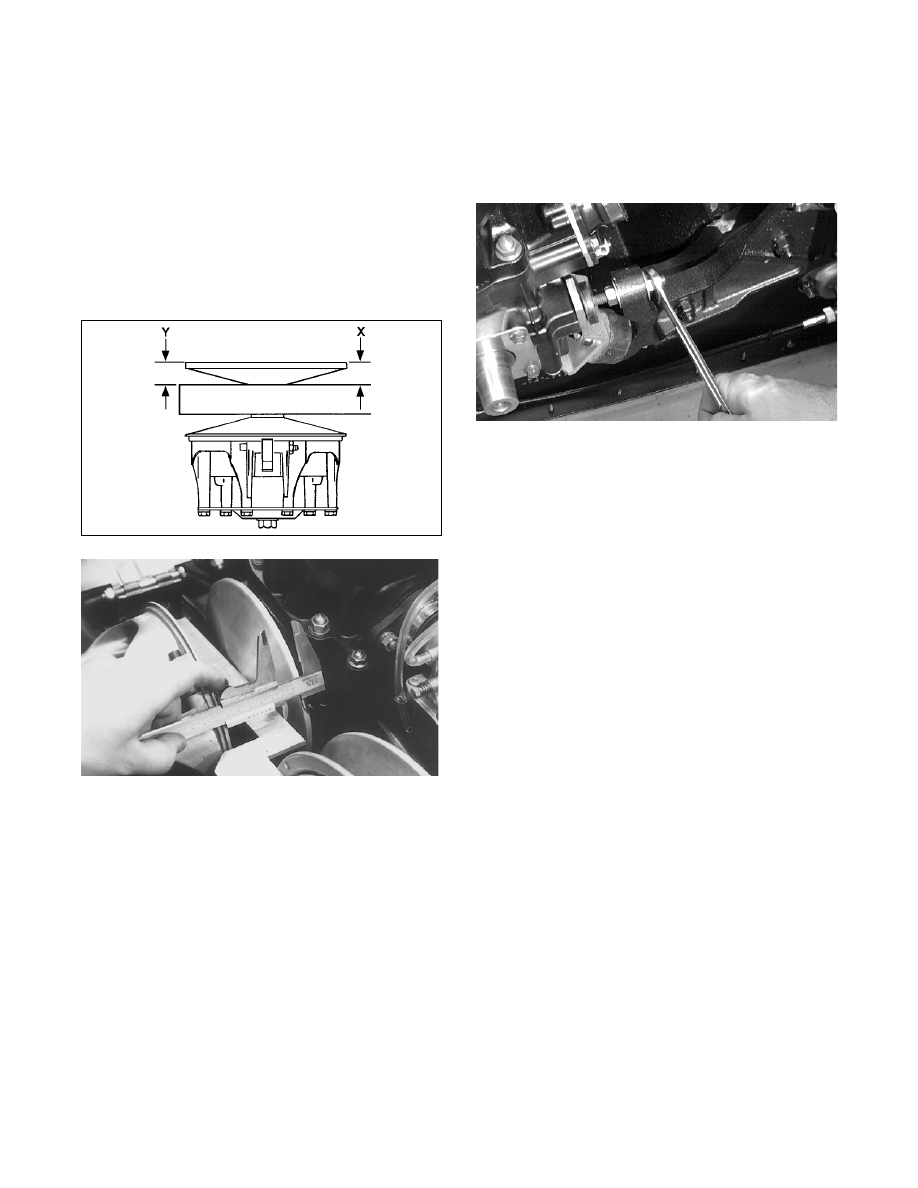Snowmobile Arctic Cat 2-Stroke (2007 year). Manual - part 102

8-28
4. Install the driven pulley and secure with a cap
screw and washers. Tighten the cap screw to spec-
ifications.
CHECKING PARALLELISM
1. Check parallelism of the drive clutch/driven pulley
using the alignment bar and reference points X and
Y with the alignment bar against the driven pulley
at points A and B. Using a calipers or a machinist's
scale, measure X and Y from the back side of the
alignment bar. Measurements X and Y must be
equal or measurement Y must be more than mea-
surement X, but Y must not exceed measurement
X by more than 1.6 mm (0.062 in.).
733-912A
AF041
NOTE: The offset must be correct before check-
ing parallelism.
2. If parallelism is not within specifications, the par-
allelism must be corrected.
CORRECTING PARALLELISM
(Torque Bumper w/Bearing
Support Bracket)
1. To correct parallelism, minor adjustments can be
made by adjusting the torque bumper on the left-
rear engine mount.
A. Loosen the cap screws and nuts securing the
engine mounting brackets to the front end.
B. Using the jam nuts on the torque bumper, adjust
parallelism and periodically check the parallel-
ism. When the parallelism is correct, tighten the
cap screws and nuts securing the engine mount-
ing brackets to the front end; then tighten the
torque bumper jam nuts allowing 1.5 mm
(0.060 in.) clearance between the torque
bumper and the engine.
AN610D
2. Recheck both offset and parallelism to ensure
accuracy and make further adjustments as neces-
sary.
NOTE: After parallelism and offset have been
corrected, check for proper drive belt deflection.
This is critical for optimum performance.
CORRECTING PARALLELISM
(Torque Bumper w/Shims)
1. To correct parallelism, minor adjustments can be
made by removing shims from or installing shims
on the left-rear engine mount.
A. Loosen the cap screws securing the engine
mounting brackets to the front end.
B. Add or remove shims as needed to attain cor-
rect parallelism.
C. When parallelism is correct, secure the engine
mounting brackets to the front end.
2. Recheck both offset and parallelism to ensure accu-
racy and make further adjustments as necessary.
NOTE: After parallelism and offset have been
corrected, check for proper drive belt deflection.
This is critical for optimum performance.
CORRECTING PARALLELISM
(Engine Snubber w/Engine Plate)
1. To correct parallelism, minor adjustments can be
made by adjusting the engine snubber on the left-
rear engine mount.
A. Loosen the cap screws securing the engine plate
to the engine mounts.